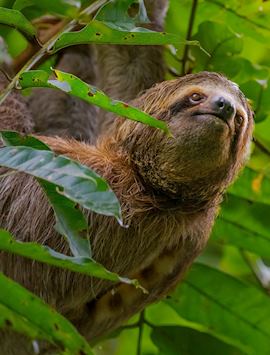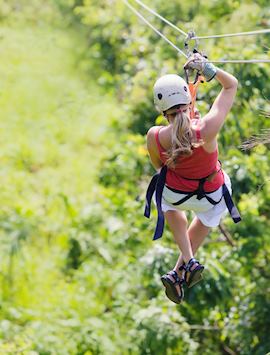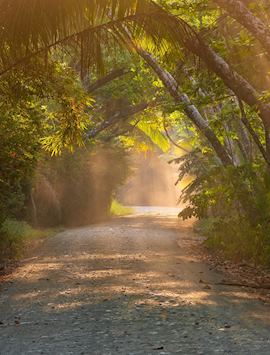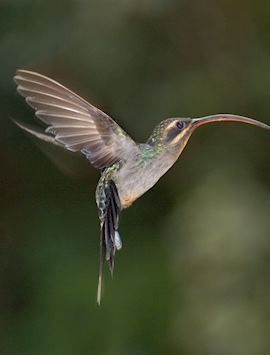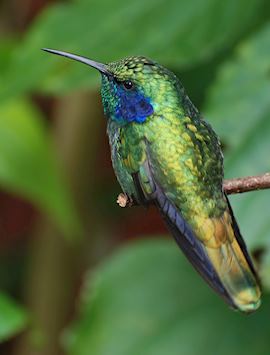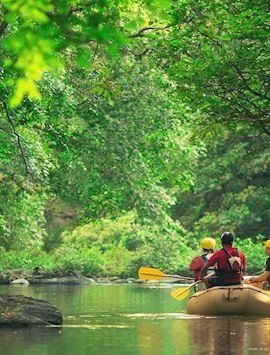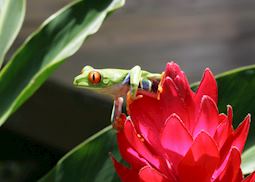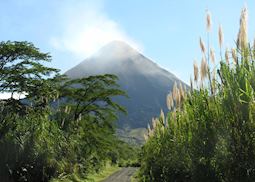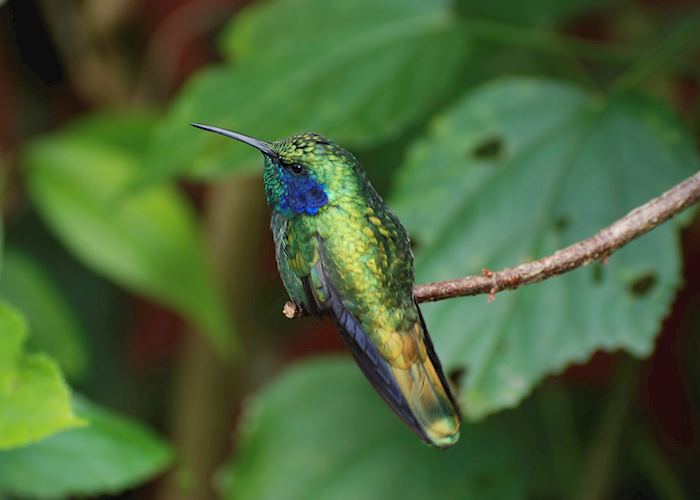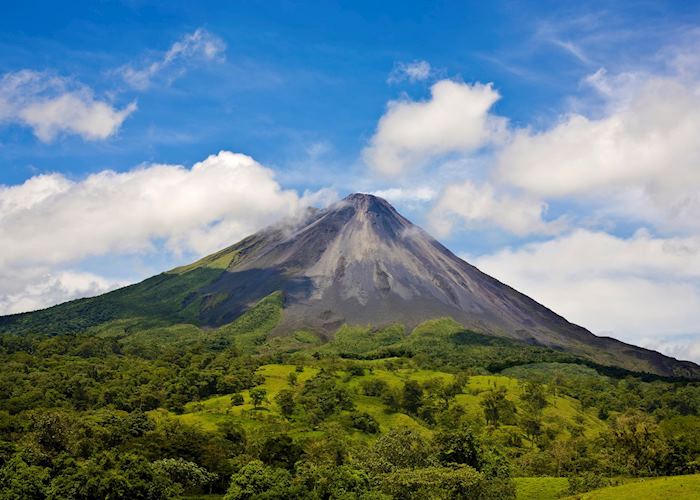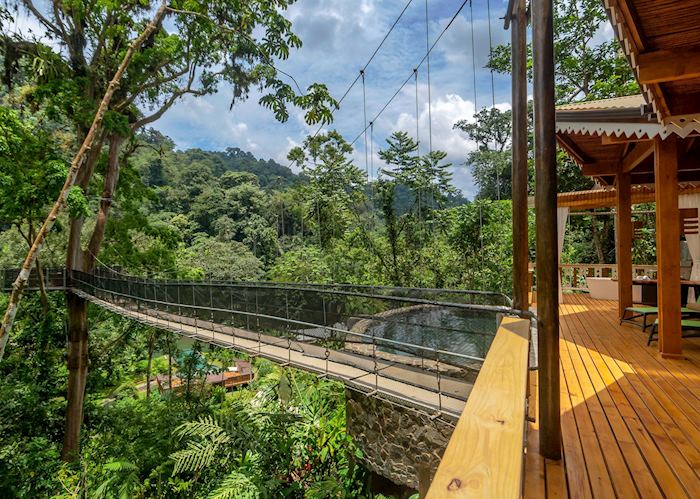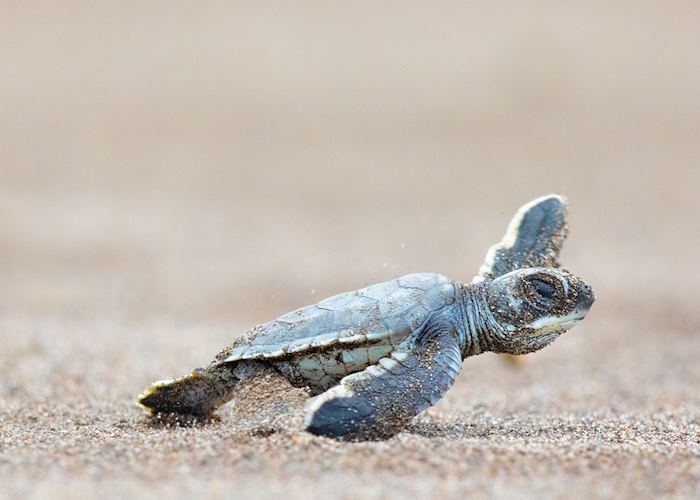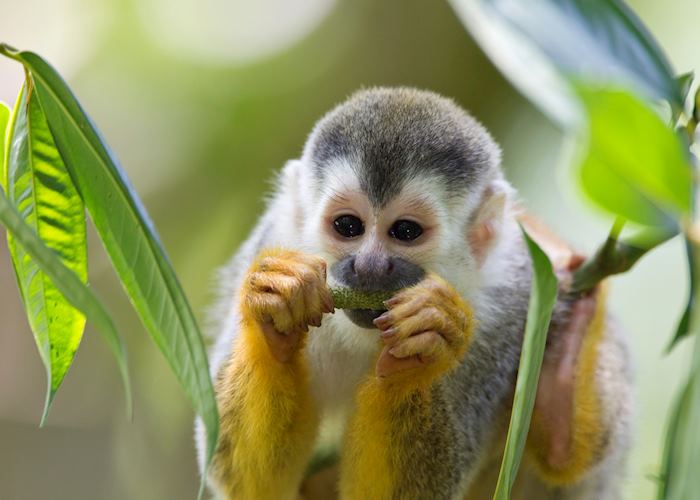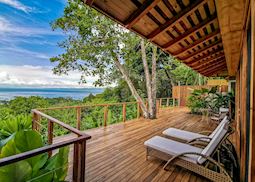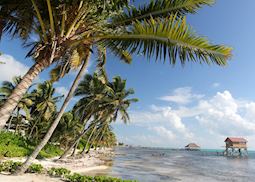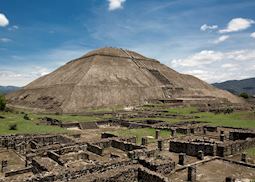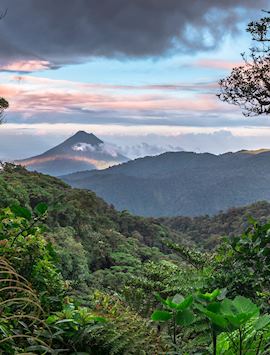

Tailor-made Costa Rica vacations shaped around your passions
Zip-lining through cloudforest, observing nesting turtles, rainforests alive with the chaotic symphony of insects… On a tailor-made vacation to Costa Rica with Audley, you’ll see the highlights — and much more — your way. We’ll design your ideal trip with you, paying close attention to your interests, your travel style and your budget. Our Costa Rica specialists know the country inside out and can lead you to experiences you won’t find in a guidebook.
Wake up to the throaty call of a howler monkey. Seek the vibrant green plumage of the rare resplendent quetzal in San Gerardo de Dota. Drift through the flooded forests and intricate canals of Tortuguero National Park. Bathe in mineral springs near Arenal Volcano. White-water raft down the Pacuare River. Unwind away from the crowds on the dark-sand beaches decorating the Northern Pacific coast. Sail to untouched islands and step ashore to hike the protected jungles of the Osa Peninsula on a cruise from Costa Rica to Panama.
Gentle surf swells at Tamarindo Beach. Scarlet macaws, tree frogs and sloths in Corcovado National Park. What excites you? Travel at your own pace, in your own style, with the confidence that we’ll show you the best options, wherever you go.
Suggested tours for Costa Rica
Look for tiny frogs, sloths, and tropical birds on guided nature walks in the Osa Peninsula, raft along class IV rapids on the Pacuare River, and relax on the Pacific Coast’s beaches. Our suggested itineraries are a great starting point as you begin to plan your trip to Costa Rica.
Suggested activities for Costa Rica
Search for sloths, caiman, and tropical birds at the Caño Negro Wildlife Refuge, view Arenal Volcano from a cable car, and cross the hanging bridges through the rainforest canopy. Whatever your interests, our specialists will suggest experiences designed to enhance your trip to Costa Rica.
-
Rain Forest Aerial Tram experience ![Howler monkey]()
Rain Forest Aerial Tram experience
San José & Central ValleyRain Forest Aerial Tram experience
The 2.6 km long ride lasts about 90 minutes and takes you on a fascinating journey through the canopy which is one of the most biologically diverse rainforests in Costa Rica.
View details -
Caño Negro wildlife refuge ![Red-eyed tree frog, Costa Rica]()
Caño Negro wildlife refuge
Arenal VolcanoCaño Negro wildlife refuge
The Caño Negro refuge itself is located 25 kilometers south of Los Chiles in the northern area of the Alajuela province, approximately a two-hour drive from Arenal. It has been declared a site of international importance for the nesting of migratory birds and occupies an area of 9,969 hectares in the Río Frío Basin.
View details -
Eco Termales hot springs ![Volcan Arenal, Costa Rica]()
Eco Termales hot springs
Arenal VolcanoEco Termales hot springs
The Eco Termales hot springs are a beautiful sanctuary surrounded by nature. The smallest of the hot springs in the Arenal area, Eco Termales is perfect for privacy and relaxation.
View details
Why travel with Audley?
- 100% tailor-made tours
- Fully protected travel
- Established for over 25 years
- 98% of our clients would recommend us
Best time to visit
Our specialists advise on the best months to visit Costa Rica, including information about climate, events and festivals.
Request our brochure
Covering all seven continents, The World Your Way shows you how you can see the world with us. It features trip ideas from our specialists alongside hand-picked stays and experiences, and introduces our approach to creating meaningful travel experiences.

Useful information for planning your vacation in Costa Rica
The official language of Costa Rica is Spanish, although English is widely spoken.
The colón is the national currency of Costa Rica. Travelers' cheques in dollars can be exchanged at any bank with a valid passport. Most places will bill in US dollars and take credit/debit cards for payment. We recommend not taking US$100 bills, as there’s currently a problem with forgeries, meaning that many banks and Bureaus de Change will not accept them.
A wide range of cuisine can be sampled in Costa Rica, like fresh seafood, rich chocolate, and strong coffee. Influences from Spanish, French and even Chinese culinary delights make their way into Costa Rican cooking — in addition to being a former Spanish colony, Costa Rica has the largest French-speaking community in Central America as well as a sizable population of Chinese descendants.
With the Pacific and Atlantic oceans bordering either side of the country, fresh seafood is a Costa Rican specialty, as are native dishes such as "gallos" (open-faced tortillas with beef, chicken or ham) and spiced and seasoned mashed black beans. Other native specialties include palm hearts, tamales, and ceviche.
Guaro is the national liquor, while a variety of local rums, beers, and flavored liqueurs are also available.
Costa Rica is also known for its coffee and chocolate, both of which you can experience firsthand. Visit Finca Rosa Blanca, which has its own coffee farm and offers tours daily, and sample chocolate on a cacao plantation tour in Puerto Viejo de Sarapiqui.
In Costa Rica, it’s customary to tip for good service and a tip is built into the bill. A 10% service charge and 13% sales tax are always included in restaurant bills.
For the latest travel advice for Costa Rica, including entry requirements, health information, and the safety and security situation, please refer to the Costa Rica travel advice on the Costa Rica Advisory page from the U.S. Department of State.
Please remember to dress respectfully when visiting Costa Rican churches, covering shoulders and knees when visiting any catholic churches or monuments.
The best experiences in Costa Rica are about enjoying the natural beauty for which the country’s renown. Walk high amid the canopy of the Monteverde Cloud Forest Reserve on the raised Selvatura Walkways, go river rafting in the Sarapiqui River’s rapids while howler monkeys play in trees along the shoreline, or kayak in the calm waters of Lake Arenal, gazing up at the Arenal Volcano. In Arenal, you can also hike along the base of the volcano or bathe in the nearby Eco Termales Hot Springs. From touring coffee fields to riding horses, there are many things to do in Costa Rica to suit every travel style.
There are also plenty of experiences on Costa Rica’s beaches, whether it’s visiting the wild beaches of Tortuguero National Park on the Caribbean Sea or heading to the Pacific coast to take surfing lessons on the consistent waves of Nosara Beach.
Costa Rica is synonymous with wildlife, such as monkeys, sloths, a vibrant birds. During a wildlife tour of Costa Rica, you might hear the loud cries of white-faced capuchin monkeys, see sloths leisurely hanging from tree branches, and see the bright feathers of macaws as they fly through the rainforest. Floating down Peñas Blancas River, you can spot monkeys, sloths, iguanas, tortoises, crocodiles, and a variety of bird species.
For a real adventure, board a boat in Los Chiles for a three-hour journey up the Rio Frio to seek out sightings of caimans, lizards, turtles, and birds — from storks and ibis to anhinga and cormorants — in the highly protected Caño Negro Wildlife Refuge.
For Costa Rica’s nocturnal wildlife, a night tour of Monteverde will give you a chance to see snakes, tarantulas, bats, insects, and even sleeping toucans in the cloud forest.
Costa Rica is a birdwatcher’s paradise and you’ll have a chance to see a wide array of birds, from parrots and toucans to waterfowl. On a quetzal walking tour in Costa Rica, you’ll look for the aptly named resplendent quetzal, admiring its trio of long tail feathers and iridescent green plumage. Birders might also spot other endemic species, like the bright yellow silky-flycatcher, sprightly moving cerise-throated hummingbird, and the peg-billed finch, with its unusually long pointed beak.
The Osa Peninsula is home to the highest concentration of wildlife in Costa Rica, and birders who want to fly among their feathered friends can take a specially built zip-line to a platform to be immersed in the rainforest canopy.
From simple guest houses in the rainforest to luxurious beachfront hotels, there is a wide range of places to stay in Costa Rica. Lodges and hotels in Costa Rica are good value but high in demand, so our specialists can advise on booking timeframes, so you don’t miss out on the best places to stay.
You can soak up the wildlife-rich Osa Peninsula with a stay at the El Remanso Rainforest Wildlife Lodge; stay at a beachfront bungalow at Nantipa, a resort set in the heart of a UNESCO-recognized Blue Zone on the Nicoya Peninsula on the Pacific coast; and feel at home in the Spanish-style Hacienda La Isla Lodge set at the base of the foothills of the Braulio Carrillo National Park.
To get a mix of what Costa Rica has to offer, visit the rainforest and the beach, both of which are plentiful in this country. The laidback beach town of Tamarindo on the Pacific Coast has calm waves that are perfect for first-time surfers. Or head further south to soak up the wild beauty of the more remote beaches of Dominical, where jungle brushes up against the shore — it’s also a great place to see dolphins and humpback whales, the latter of which gather in Marino Ballena National Park from December to March and August to October.
Northwest of San Jose, visit the Arenal Volcano and the Monteverde Cloud Forest. Once the most active volcano in Central America, Arenal towers 1,633 m (5,357 ft) above sea level. The misty Monteverde Cloud Forest stretches from the Arenal Volcano down to the hills of Guanacaste Province on the west coast. And visit Tortuguero National Park on the Caribbean coast where you might be able to witness the nesting or hatching seasons of sea turtles in this marshy wonderland.
The flight time to Costa Rica from the US can be as short as just under 3 hours from Miami, 5 hours and 45 minutes from Los Angeles, and just over 5 hours from New York City.
The time zone in Costa Rica is UTC-6, the same as Central Standard Time (CST) in the US. Costa Rica has only one time zone and doesn’t observe daylight saving time.
The best way to get around Costa Rica is by car, either with one of our experienced drivers or driving yourself in a rental car. Self-driving in Costa Rica is safe and straightforward as there’s been a good deal of investment to pave roads, signs are all in English, and the rental cars we use are less than three years old and come with GPS or a Wi-Fi hotspot device, depending on availability.
You’ll still encounter some dirt roads and gravel paths leading up to remote lodges, which is why we recommend a 4x4. Despite the relatively small size of the country, at times we may suggest internal flights for some journeys.
Use our travel tool to find up-to-date visa and passport requirements for Costa Rica. Enter where you’re traveling to and from (including any stopover destinations en route or flight layovers), along with your intended travel dates and passport details, for a full list of requirements.
Your doctor can provide you with immunization advice for Costa Rica, but you should also ensure you’re up to date with the recommended vaccinations for your home country. You can also check the recommended vaccinations by visiting the Centers for Disease Control and Prevention.
Costa Rica in pictures
Our expert guides to traveling in Costa Rica
Written by our specialists from the viewpoint of their own travels, these guides will help you decide on the shape of your own trip to Costa Rica. Aiming to inspire and inform, we share our recommendations for how to appreciate Costa Rica at its best.
-
![My travels in Costa Rica]()
My travels in Costa Rica
Overseas product specialist Scott captured this footage on his recent trip to Costa Rica. He canoed on rivers through rainforest, visited plunging waterfalls and explored the many beaches and volcanoes. He also encountered some of the varied wildlife, including hummingbirds, scarlet macaws and poison dart frogs.
-
What to do in Costa Rica: our highlights guide ![Red eyed tree frog, Costa Rica]()
What to do in Costa Rica: our highlights guide
What to do in Costa Rica: our highlights guide
One of the most biodiverse countries on the planet, Costa Rica attracts nature lovers and adrenaline seekers alike. Country specialist, Nik, picks out some of the country’s highlights, from white-water rafting to wildlife spotting in the cloudforest.
Read this guide -
Best family vacations in Costa Rica ![Brown-throated sloth, Pacaya Samiria Reserve]()
Best family vacations in Costa Rica
Best family vacations in Costa Rica
From the rainforests of Arenal Volcano to wildlife experiences in Tortuguero National Park and the surf breaks of Tamarindo, Costa Rica is ideal for families. Specialist Nik gives his advice on activities, hotels, and travel logistics for a family trip to Costa Rica.
Read this guide -
Luxury vacations in Costa Rica ![Premier Villa, Lapa Rios]()
Luxury vacations in Costa Rica
Luxury vacations in Costa Rica
Luxury in Costa Rica lies in the unrivaled wildlife that covers the country, from the Pacific to the Caribbean coast. With small hotels designed to make the best of the natural surroundings, this is barefoot luxury at its most pure.
Read this guide -
Wildlife vacations in Costa Rica ![Squirrel Monkey, Manuel Antonio National Park, Costa Rica]()
Wildlife vacations in Costa Rica
Wildlife vacations in Costa Rica
From birds to basilisks, Costa Rica specialist Holly lets you in on the country’s wildlife highlights. She also explains where exactly to go to increase your chances of observing all Costa Rica’s rich biodiversity.
Read this guide

